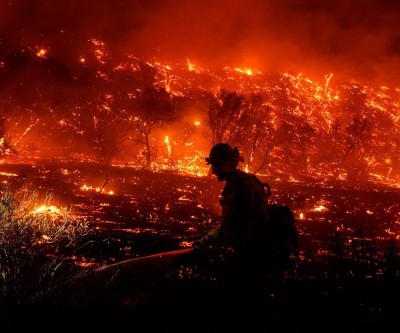
The Canadian man who ran the length of Italy in 85 days
David Orr, a Canadian, is taking the final steps of a run that began at 4 in the morning. His hands and feet are covered with scratches from a path that has overgrown to the point he describes it as "savage." The path to self-discovery can lead people to unusual places, but few go as far as Orr, who was on the first day of an almost three-month, 3,500-kilometer run up the length of Italy. He describes this journey as mystical, from the eruptive Mount Etna in the south to the snow-covered Mont Blanc (known as Mont Blanc in Italian) in the north.
Speaking about Mount Etna, Orr says, "This morning I took the Canadian flag up there, took an Italian flag." "Then I basically slid down a thousand meters on a kind of lava slide. I just let myself go."
David Orr, a computer engineer from Stratford, Canada, living in Florence, faced a setback earlier this year when a startup he was involved in failed. Seeking a challenge to give his life new meaning, he decided to delve deeper into his adopted country while drawing attention to the Great Italian Trail, also known as Sentiero Italia (SI), which is widely unknown and in parts neglected.
One of the world's great trails
Spanning approximately 8,000 kilometers, the trail is one of the world's longest, traversing 16 UNESCO World Heritage sites and numerous national parks. Inaugurated in 1995 by the Italian Alpine Club, the trail runs the length of the Italian peninsula, starting in the Alps, running down the boot-shaped Apennines, and then jumping to the islands of Sicily and Sardinia.
It is maintained by thousands of volunteers who perform various tasks, including trail maintenance, education, reforestation, running rescue stations, and managing around 21,000 beds in 750 shelters, many of which also provide hot meals.
Marco Garcea, a hiking guide in Calabria, southern Italy, who co-wrote part of the 12-volume Sentiero Italia guidebook, said, "Along with promoting slow, sustainable tourism, SI allows those walking it to get a sense of indigenous vegetation and encounter local people along the way."
In 2019, the Alpine Club began renovating the trail, which had fallen into disrepair in some areas, especially in the south.
"In the north, they have more famous mountains, but in southern Italy, the trails offer a greater level of discovery, greater contact with local culture," Garcea said.
The paths in the south, he says, once linked remote mountain settlements, with others used by inhabitants searching for firewood, collecting grapes, or grazing, including some old transhumance routes for the seasonal droving of livestock.
Orr says that with the exception of parks like the majestic Pollino National Park that spans Calabria and Basilicata, the trail in southern Italy had "mostly gone to hell with Mediterranean vegetation I had to hack my way through."
Suggested Content
Latest Blog
Login first to rate.
Express your opinion
Login first to submit a comment.
No comments yet.
























